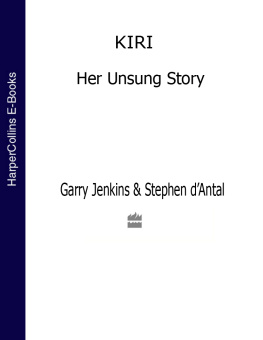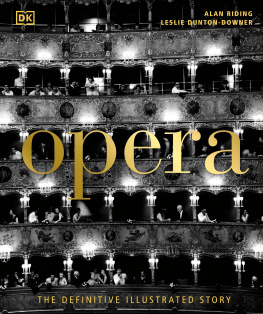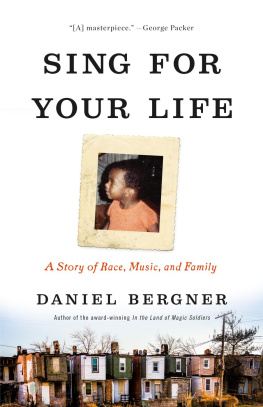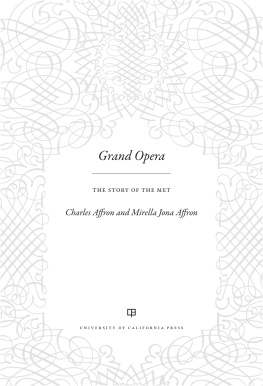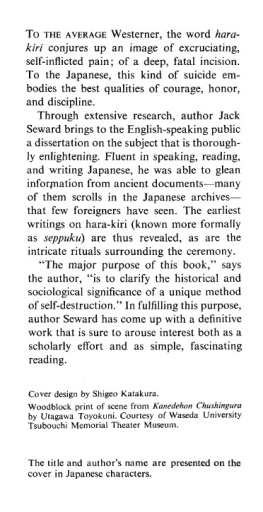CONTENTS

Australia
HarperCollins Publishers (Australia) Pty. Ltd.
Level 13, 201 Elizabeth Street
Sydney, NSW 2000, Australia
www.harpercollins.com.au
Canada
HarperCollins Canada
2 Bloor Street East 20th Floor
Toronto, ON, M4W, 1A8, Canada
www.harpercollins.ca
New Zealand
HarperCollins Publishers (New Zealand) Limited
P.O. Box 1
Auckland, New Zealand
http://www.harpercollins.co.nz
United Kingdom
HarperCollins Publishers Ltd.
1 London Bridge Street
London SE1 9GF
www.harpercollins.co.uk
United States
HarperCollins Publishers Inc.
195 Broadway
New York, NY 10007
www.harpercollins.com
Chapter 2
New Zealands currency was the pound until October 1967, when it became the dollar.
Here is Kiri of the Lovely Voice, whose singing and whose love of song have led her to the threshold of a great career in music, read the dust jacket notes for the first biography of Kiri Te Kanawa, written by the New Zealander Norman Harris, when she was just a twenty-two-year-old London Opera Centre student in 1966. In the thirty years since its publication, as Kiri Te Kanawa has more than fulfilled the promise of her youth, she has been the subject of three more biographical and semi-autobiographical books: Kiri: A Biography by David Fingleton (1982); Land of the Long White Cloud (1989) and Opera for Lovers (1996). Each publication, like Harriss initial effort, has offered a portrait as carefully choreographed as any of Kiris operatic productions. Kiri: Her Unsung Story offers a new and alternative view of a remarkable life.
Ours is the first biography to have been researched and written without the co-operation of Kiri or those people currently associated with her. It is a wholly independent and unauthorised portrait. For that reason, we believe, it is the most exhaustive, truthful and revealing. While the lack of Kiris stamp of approval inhibited some most significantly Desmond Park, who in conversation with Stephen dAntal said he preferred not to talk to us without his ex-wifes blessing the vast majority of those whom we approached were ready and willing to share their memories. They have provided a multi-faceted portrait of a complex and compelling human being. Each placed in us the trust that we would present as honest a picture of her remarkable life as possible. We hope we have repaid that faith.
It was the American writer Bernard Malamud who best defined the thankless task that faces all biographers. One cannot make pure clay from times mud, he wrote. Few public lives can have been mired in such uncertainty, particularly in early years. The fact that we have been able to shape so much of Kiris poignant and powerful story is largely down to the help and encouragement of a number of individuals to whom we owe a particular debt of gratitude.
Primary among these is Kiris niece, Judy Evans-Hita, a lynchpin in our research, who is owed more thanks than we can muster. Similarly Bob Morgan, Barbara Brown, Susan Smith, Tony Vercoe, Rodney Macann, Kay and Bruce Rowbottom and Brooke Monks have shown a generosity that cannot be repaid. Time and again they have enabled us to piece together events that would otherwise have remained impenetrable. Time and again we would have been lost without them.
No area of our research was more demanding than that relating to Kiris origins, a subject of controversy among those connected to the events of 1944 for more than half a century. Here again we were fortunate. Noeleen Rawstrons sister Donny, daughter Sharon, brother Ken and niece Jennifer patiently and gracefully permitted us to unravel a traumatic episode in their family history, as did Jack Wawatais ex-wife Apo, sister-in-law Ona, daughters Lynne and Bubba, son Jason and sister Hukarere. We are indebted to each of them.
Special thanks for their patience and trust are also due to Don Hutchings, Stephen Dee, Iain Aitken, Tracy Grant, Tom Hawkes, Neil McGough, Vincent Collins, Mary Masterton, Pettine-Ann Croul, Lynne Candon, Peter Downes, Lindsay and Madeleine Rowell, Teresa Cahill, Hannah Tatana, Beverley Jordan, Jeremy Commons, Adolf Lacis, John McKay and John Matheson, Joan Ingpen and Sir Donald McIntyre.
For contributions great and small, we would also like to thank the following people: Jean Wishart, Michael Willison, John Lesnie, Felix Donnelly, Donald Trott, Sally Williamson, Lloyd Williams, Bill Denholm, Catherine Reed, Brian OConnor, Selwyn Rogers, Mabel Kewene, Bob Sell, Elsa Vujnovich, Harry Hall, Cherry Raymond, Les and Sonia Andrews, Lou Clauson, Trish Cornish, Rosemary Barnes, Johanna Fiedler, Norman Lebrecht, John Kentish, Osvalda Robertson, Sheila Thomas, Diana Stuart, Murray Khouri, Patricia Price, Keith Foote, Sisters Mercienne and Patricia, Billie Trillo, Nerida Nicholls, Sister Margaret Browne, Graeme and Lurene Lindsay, Dame Barbara Goodman, Dame Catherine Tizard, Professor Ranginui Walker, Logan Brewer, Richard Campion, Jill Palmer, Hugh Walzer, Cyril Brown, Ulric Williams, John OShea, Constance Kirkaldie, Donald Perry, David Baldock, Colin Broadley, John Thompson, John Thompson, Ian Fraser, Madge Malcolm, Frank Habicht, Claire Jones, Eva Brown, Christine Hall, Bill Kerekere, Phil Aspinall, Jim Rawstron, Bill Walsdorf, Julie Ferris, Kahu Bullivant, Allan Andrews, Ira Haig, Stan Green, Pahoe Mahuika, Marie Landis, Christopher DeLautour, Patricia Payne, Gillian and Barry Trott, Myra Webster, Bob Alp, Terry Valentine, Malcolm McNeill, Bob Parker, Margaret Lovell-Smith, Dame Mira Szaszy, Terry Nash, Simon Mehana, Beverley Simmons, Tony, Kelvyn and Klynton Alp, Ricky Evans-Hita, Bobby Webster-Kerr, David Stubbs, David Park, Harvey Joyce, John Hopkins, Rachel Bridge, Ross Land, Frank Thome, Moffatt Oxenbould, Tony Williams, Thelma Robinson, Joan and Max Aronsten, Dr Charles Nalden, Peter Godfrey, Louise Wright and Simon Shields. Other names must remain unwritten but not forgotten.
Condolences go to the family of Elaine Hegan, for so long the doyenne of Aucklands theatrical agents, who died shortly after giving a very useful interview to the authors.
Gratitude is also due to the staff at the Gisborne Museum and Auckland City Librarys research centre, the British Library, British Film Institute and National Sound Archive in London.
The book could not have been completed without the limitless generosity of Simon Runting in Auckland, to whom Stephen dAntal owes particular thanks, along with Simon Bassett-Smith, B. J. Brown, Ken Cooke and Virginia Leonard for their help and support, Tim Willcox for his ideas, and Paul Scott and Alison Bowyer for their extraordinary resources.
In London we are deeply indebted to Mary Pachnos, our agent at Aitken & Stone, who was the first to grasp the books potential while at HarperCollins we were particularly fortunate to benefit from the editorial brilliance of Val Hudson and Andrea Henry. Without their cool, calming wisdom we would never have met a deadline that seemed utterly impossible until the very end. Thank you both, very much.
Lastly, to Kim Parkinson and Eva dAntal, Cilene and Gabriella Jenkins, who endured great neglect cheerfully, go much more than thanks. They were all the inspiration we could wish for.
Garry Jenkins and Stephen dAntal,
LONDON & AUCKLAND, JULY 1998
In the early months of 1944 in the remote New Zealand community of Tokomaru Bay, an auburn-haired, twenty-six-year-old woman, Noeleen Rawstron, walked out of the shabby, corrugated iron bungalow that had been her home. She loaded a few belongings into a taxi and began the fifty-mile drive south to the nearest major town, Gisborne, on the eastern Pacific coast.
Next page
